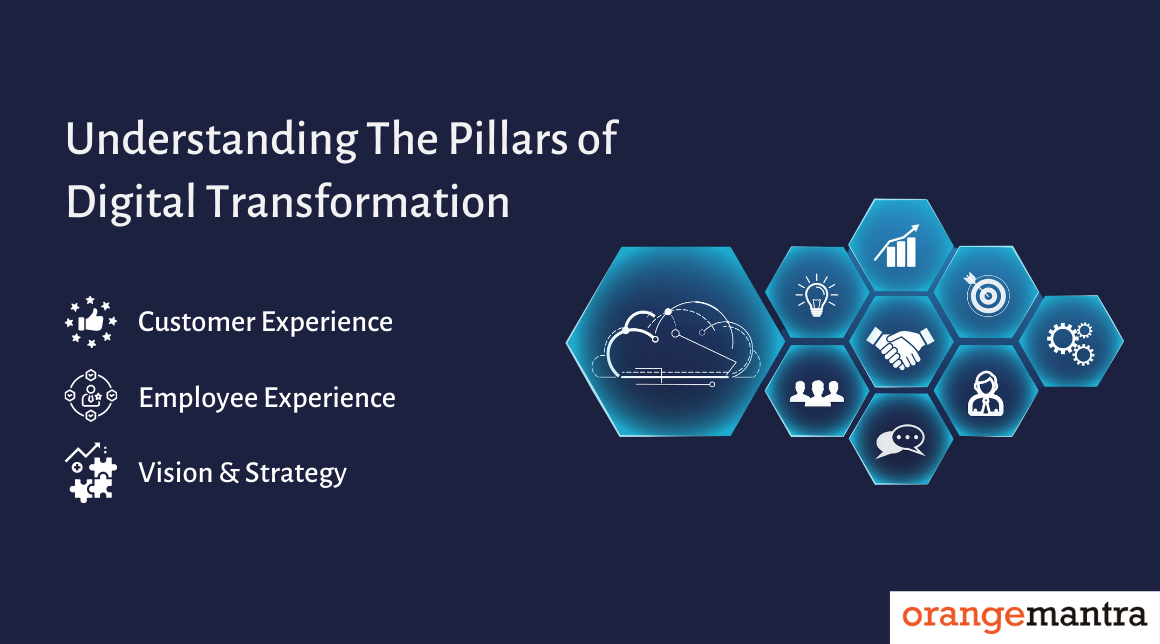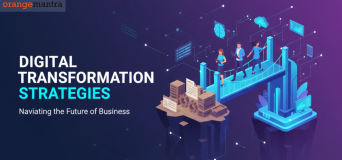
Here’s what you will learn:
Digital transformation strategies are on a hyperdrive, thanks to the global pandemic. As consumers, we all experienced lockdowns pushing us towards ordering food and groceries online. Shopping, teaching, learning, and most professional services went fully digital. With ever-growing demands, brands are finding new ways to operate and connect with customers digitally. A growing number of businesses are choosing digital transformation services and technologies that help achieve such goals.
Industry giants like Nike, Spotify, and Uber have already embraced technologies and pioneered digital innovations. Today, these brands ensure convenient, responsive, and engaging experiences across services. Meanwhile, helping transform the entire business model. As digital natives, their intrinsic use of technologies such as cloud, mobile, and analytics have continued to evolve and scale up at speeds unthinkable for the traditional business environment.
As the eCommerce web development world transforms its business models, dynamic, digital-first experiences are getting more prominence than ever. Such transformations are helping to enhance the customer experience, shed costs, and improve the stock value of their multi-tier programs. However, companies are funneling more resources into the transformation. Their “transformation” may sound complicated, but the pillars on which it stands are not.
Digital transformation (for good or bad) is associated with B2C organizations, and as a result, some B2B business leaders still think they won’t need this change. However, it is far from truth and reality – Digital transformation is a way of expressing the need for large technological shifts all organizations need to make sooner or later. While this change may be different for B2B and B2C organizations, the foundational concepts are the same for every enterprise. Every digital transformation requires a strong culture, a mindset shift, and an understanding of the central pillars, as explained in the following paras.
Table of Contents
4 Most Crucial Pillars of Enterprise Digital Transformation
Customer Experience
While it’s obvious to first think about the vision of your strategy, but we recommend every organization to first think about their customers and clients. To make your business a success, you need to first attract customers and without them, you don’t have a business. Do your homework on the evolution of your audience, trends, and how your customers intend to experience these trends in the future. After all, digital transformation is all about implementing digital solutions, processes, and ideas to enhance the customer experience.
Understanding the core tenets of what your customers may expect from your brand will provide you with an early roadmap for business evolution. It may require evolving your talent pool, business culture, and technology paradigm. The best way to know your customer is to ask them a few questions:
- What would they buy from you, and why?
- What would attract them the most?
- How does the company stack up against your competitors?
These custom-focused approaches may get painful to hear, but this step is critical for the success of your digital transformation services.
Employee Experience
Technology transformation can create a huge impact on your customers. However, change is an inevitable process, and to stick with the change, you need to humanize it. For instance, when you spend resources in understanding your customers, take some time out to understand your employee’s experience as well – both current and desired. Understanding your customers helps establish the right goals, whereas, understanding your team helps you achieve that goal.
Digital transformation and blockchain enterprise development are all about transforming the business from the inside out. Businesses that keep transparency in their value and invest in people experience easy transformation due to the loyalty and support of their core team. Never forget that every interaction that an employee has with your organization is critical and will greatly impact your business, technology, and brand.
Vision & Strategy
Vision and strategy remain at the heart of every transformation. So, before you choose your vision, make sure it’s easily understandable, relatable, and backed up with a clever plan in case things go the other way. This robust strategy will set your business unique from the other competitors. Many business leaders come up with a unique vision, and it falls apart when it comes to execution. To prevent such a scenario, focus on two things primarily – Performance and Health.
Performance is what makes a business deliver improved results in both financial and operational terms. On the other hand, health defines how effectively an organization can work in pursuit of its digital transformation goals. To develop and execute a successful vision and strategy, ask yourself the following questions:
- Where do you want to take your business?
- Are you ready to take the business to new heights?
- What would you require to get there?
- How can you measure and manage this journey?
- What is the role of your technology in implementing this strategy?
- How do you govern the entire process?
Digital Connections
Before you proceed with your business, assume that everything and anything can get digitized. Map out your customer and employee’s journey, look at areas that can easily get digitized, and spend less time on it. You can also leverage existing research and available technologies. Spending more time making digital connections is usually not an obvious choice. Many businesses struggle to figure out where to add to their competitive advantage and enhance the overall customer experience.
Securing your digital connection is as crucial as solving complex problems. For instance, you plan to change a development process within the organization. But it doesn’t translate into a better user experience than you have initiated a digital disconnect. Leverage digital technology to create repeatable, foundational components to help propel your digital transformation journey.
Summing it up
The biggest challenge for companies today is to adapt to new technologies and see it as a one-and-done thing. The same technology stays there for x number of years. Organizations must understand that technology is ever-evolving, which means your business and technology must keep changing now and then. As business leaders and a well-renowned Magento development company, we are willing and ready to evolve ideas, execute them, and implement them- both strategically and tactically.
FAQs
1. What is Digital Transformation?
It refers to an organization’s effort that aims to:
- Improve the organization’s technology and tools
- Enhance employee’s digital skills
- Adopt new, modern business models
- Inculcate new cultural ideas
2. Why does Digital Transformation matter?
The world’s economy is evolving and getting digitized. Organizations should use digital transformation services to:
- Help businesses regularly engage in digital adoption, transformation, and change efforts
- Help the entire global economy get digitized
- Help businesses stay competitive in the market
- Help transform organizations to effectively survive, thrive and succeed
- Help companies that are slow to adapt not lose their edge in the competitive market
3. What is cloud ERP?
Cloud-based ERP is a type of enterprise resource planning (ERP) software that runs on a cloud computing platform, rather than on a business’s premises. Cloud or online ERP solutions offer great benefits in terms of cost and efficiency.


